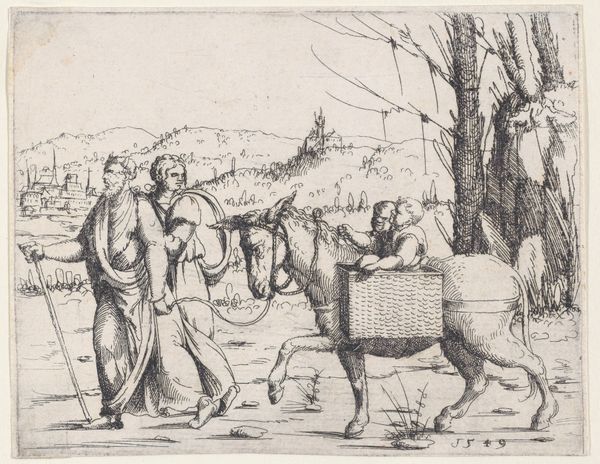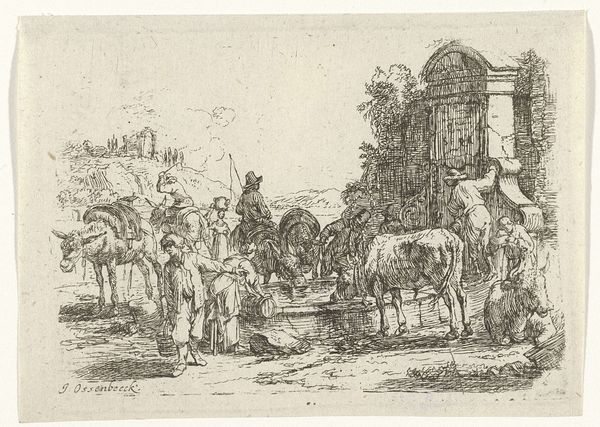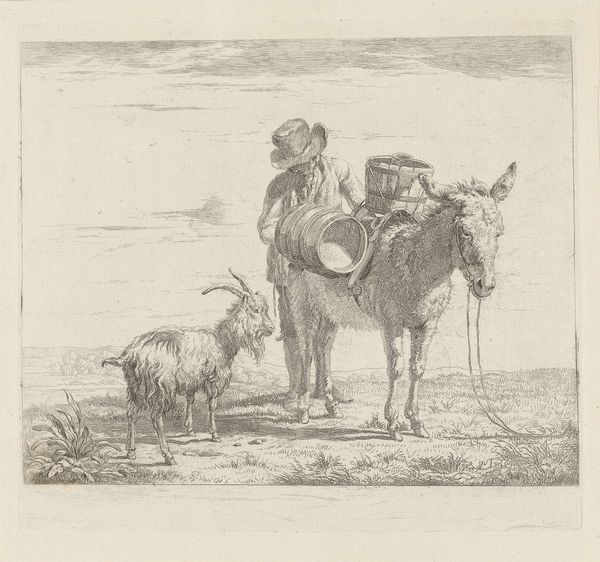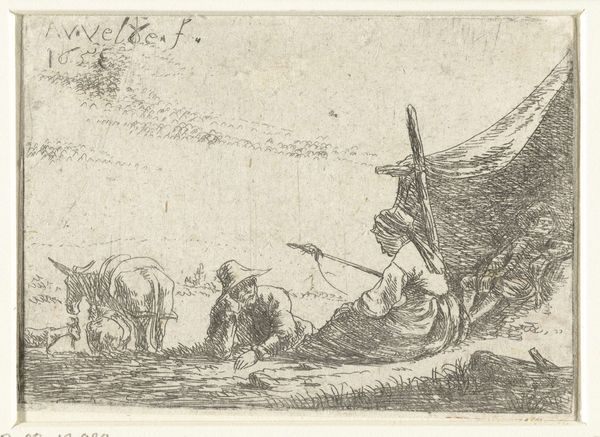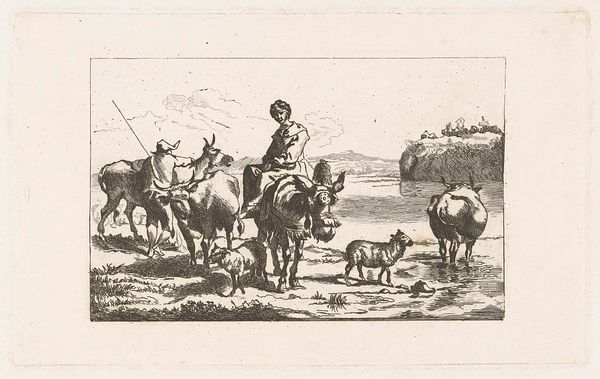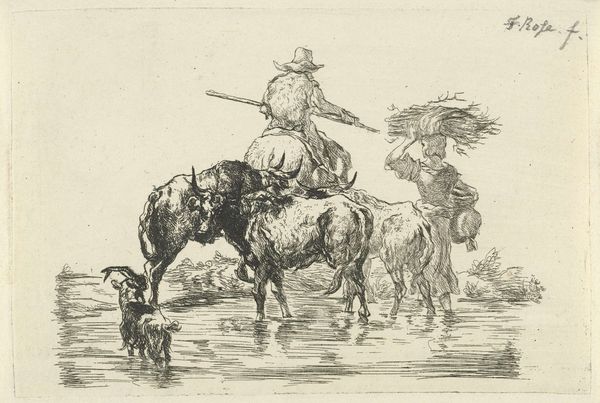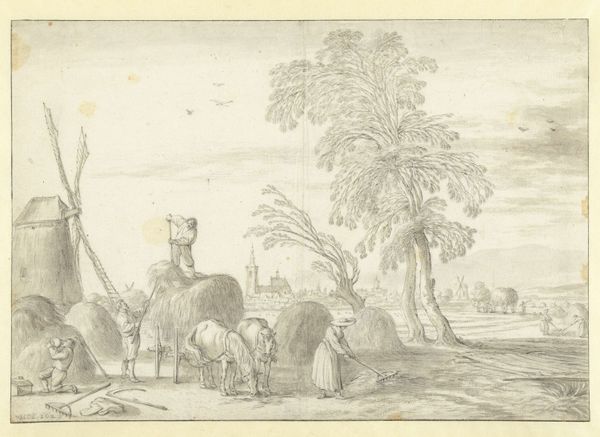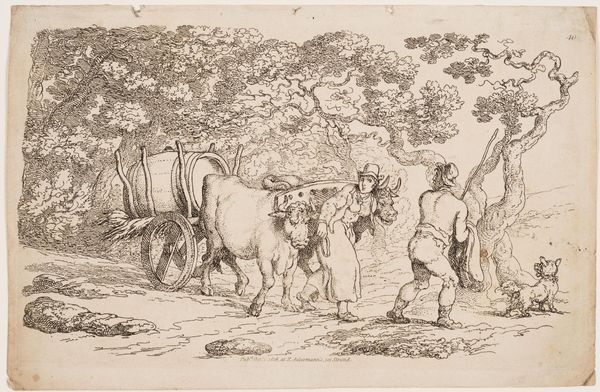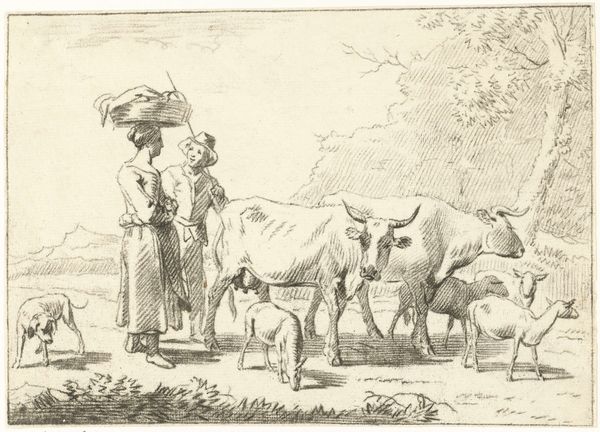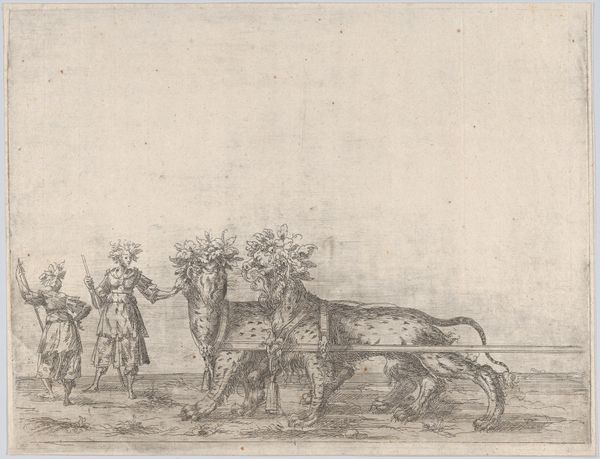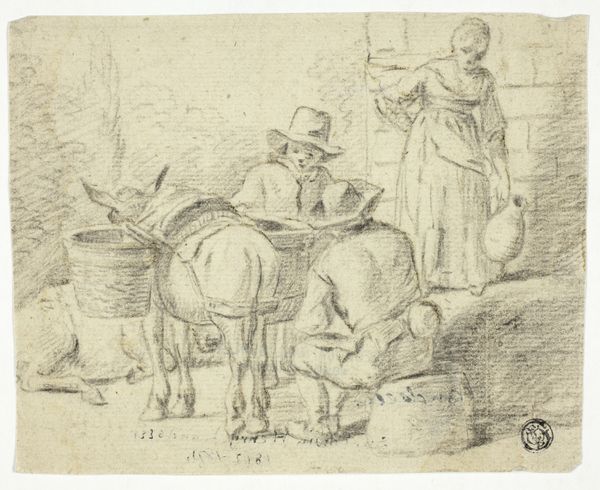
Vrouw en ezel staan in ondiep water, een hond springt op voor haar voeten 1652 - 1659
0:00
0:00
print, etching
#
narrative-art
#
dutch-golden-age
# print
#
etching
#
landscape
#
figuration
#
genre-painting
Dimensions: height 168 mm, width 202 mm
Copyright: Rijks Museum: Open Domain
Editor: Here we have "Woman and donkey standing in shallow water, a dog jumps up at her feet," an etching by Karel du Jardin, created sometime between 1652 and 1659. It feels so… pastoral, like a glimpse into the everyday life of the Dutch Golden Age. I wonder, what story do you think it's trying to tell? Curator: Well, what strikes me immediately is how Du Jardin, within the context of the Dutch Golden Age, is participating in a certain romanticization of rural life, influenced by Italianate painting. These images played a key role in shaping the urban, bourgeois imagination. This etching isn't just a depiction; it's carefully constructed to appeal to a specific audience, creating a nostalgic view of simplicity. Who exactly was the intended audience of this piece and how would this influence how this image was read in the mid-17th century? Editor: That's interesting, because the everyday feeling almost makes it seem unscripted, an unedited view of rural life. Were people aware that these were often constructed realities? Curator: Some undoubtedly were. Remember, printmaking was becoming more widespread, increasing access to imagery, which meant viewers were likely becoming more discerning, engaging in discussions about authenticity and representation, so maybe not so naïve as we might think. Do you notice the positioning of the woman and the donkey relative to the landscape, and how this reinforces certain ideas? Editor: I see. The woman is prominent, centrally placed, but the landscape sort of dwarfs her, suggesting a connection with nature... something uncomplicated? I can see now how this can reinforce certain beliefs of the time. Curator: Exactly. This image taps into existing social narratives about the relationship between city and country, about virtue, labor, and the “natural” order of things. Thinking about the dog’s movement… how can a little detail be so telling? Editor: Wow, thinking about the social and historical context really makes me see this print in a whole new light. Curator: Precisely. It is the layers of historical context which add greater nuance to the art itself.
Comments
No comments
Be the first to comment and join the conversation on the ultimate creative platform.

